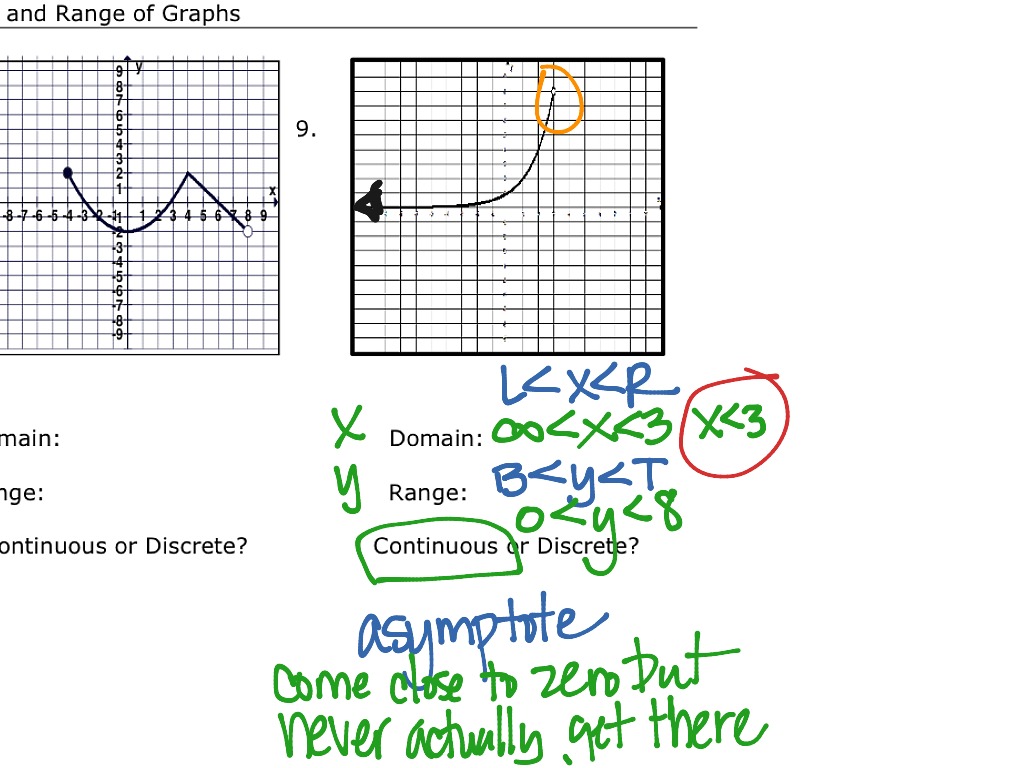


Subtract the two formulas by entering =B2-B1 into cell C1. In cell B2, enter the formula =MAX(A1:A10). Here is a list of steps for calculating range in Excel using MIN and MAX functions:Įnter the data into A1 through A10, then enter the formula * *=MIN(A1:A10)** into cell B1.
#Range in math term how to#
Here are some ways to calculate range in Excel using multiple methods: How to calculate range using the MIN and MAX function: Related: 10 Top Excel Accounting Formulas and Functions (With Examples) Calculating range in E xcel You can write this as the formula =IF(A1:A10,"low","high"). IF: The IF function returns a value based on a condition. You can write this as the formula =MEDIAN(10,11,12). MEDIAN: The MEDIAN function returns the median (average) value of a set of values in an array. You can write this as the formula =RANK(A1:A10). The rank is the position of each value in the range, with one being the highest rank. RANK: The RANK function returns the rank of each value in a range. You can write this as the formula =LARGE(A1:A10). LARGE: The LARGE function returns the largest value in a range. You can write this as the formula =SMALL(A1:A10). SMALL: The SMALL function returns the smallest value in a range. You can write this as the formula =COUNTIF(A1:A10)**. If the value isn't in the range, it returns NO.

You can write this as the formula =COUNTA(A1:A10).ĬOUNTIF**: The COUNTIF function returns YES if a value is in a range. You can write this as the formula =MIN(A1:A10).ĬOUNTA: The COUNTA function returns the number of values in a range, including both numbers and text. MIN: The MIN function returns the minimum value of a range. You can write this as the formula =MAX(A1:A10). MAX: The MAX function returns the maximum value of a range. Here are some functions in Excel that relate to range, with a description of each function: To use a function, you can enter a formula that uses the function in an unoccupied cell. For instance, if you have a set of numbers entered in cells A1 through A10, you can use a function to calculate the highest number listed among those cells. In Excel, you can use functions to make various calculations based on the data you enter within specific cells. For example, the lowest to the highest values of a salary dataset might be $10,000 to $50,000. Range in statistics is simply the difference between the highest and lowest values in a set of data. In this article, we discuss the definition of range in statistics, list several functions in Excel that relate to range, describe how to calculate it using multiple methods and provide real-world applications of calculating range. Learning about how to calculate range in Excel can increase your knowledge of Excel capabilities. Excel offers a few simple methods for calculating ranges. So range and mid-range.Finding the range of a dataset is one of the most common types of statistical analysis that you can do. Obviously, you couldĪlso look at things like the median and the mode. The arithmetic mean, where you actually take
#Range in math term plus#
So this is going to be what? 90 plus 60 is 150. The mid-range would be theĪverage of these two numbers. With the mid-range is you take the average of the One way of thinking to some degree of kind ofĬentral tendency, so mid-range. The tighter the range, just to use the word itself, of The larger the differenceīetween the largest and the smallest number. See, if this was 95 minus 65, it would be 30. Want to subtract the smallest of the numbers. Largest of these numbers, I'll circle it in magenta, The way you calculate it is that you just So what the range tells us isĮssentially how spread apart these numbers are, and Mid-range of the following sets of numbers. In statistics you're given the numbers and you have to figure out what kind of equation they describe. In ordinary math you're given the relationship of the equation and you just have to plug in the numbers. Do people going to the beach make the temperature go up? Or is it the other way around? In this example it is obvious, but lots of times it isn't. Sometimes there is a relationship, sometimes there is not, and even when there is a relationship it isn't aways easy to figure out what it is. In statistics you're basically given two or more variables (x, y, etc) and you have to figure out if there is a relationship among them. In ordinary mathematics you're given a relationship in the form of an equation (x+y = z) that you can then plug numbers into and get an answer. In this case there obviously is, but in other examples the relationship isn't so obvious. For example, if the temperature goes up on the thermometer, and you count more people going to the beach, then you might want to determine whether there is a relationship between the two things. Statistics attempt to establish the relationship between one or more measured things.


 0 kommentar(er)
0 kommentar(er)
